This elegant vase or cachepot, made in France in the 19th century, has a gilded and finely chiselled bronze structure that supports a vase made with the cloisonné technique.
The cloisonné, also called lustre of Byzantium, is a technique of artistic decoration in enamel, in which thin wires or cells (called in French cloisons) are welded to a plate of support of the work to be built;later, in the areas detected by the metal, enamel is poured, thus obtaining a sort of mosaic whose tiles are precisely circumscribed by the metal strips.The refined decoration of this vase has a blue background with polychrome plants and flowers and birds.
The bronze structure, of oriental taste, crowns the vase with a perforated band that imitates the woven twigs.Two phytomorphic sockets run along the height of the vase and weld to the base in circular bronze, chiselled with geometric decorations.The base rests on four feet in gilded and chiselled bronze anthropomorphic shape.They are four fantasy creatures in the form of devils who, bent, support the vase and its structure with their backs and arms.Among every devil there are decorations with floral elements and bronze draperies.
This refined vase, of distinct decorative character, can be used as a planter and cachepot, resting on a gueridon, on a chest of drawers, on a console or even on a dining table or a coffee table.
Good state of preservation.


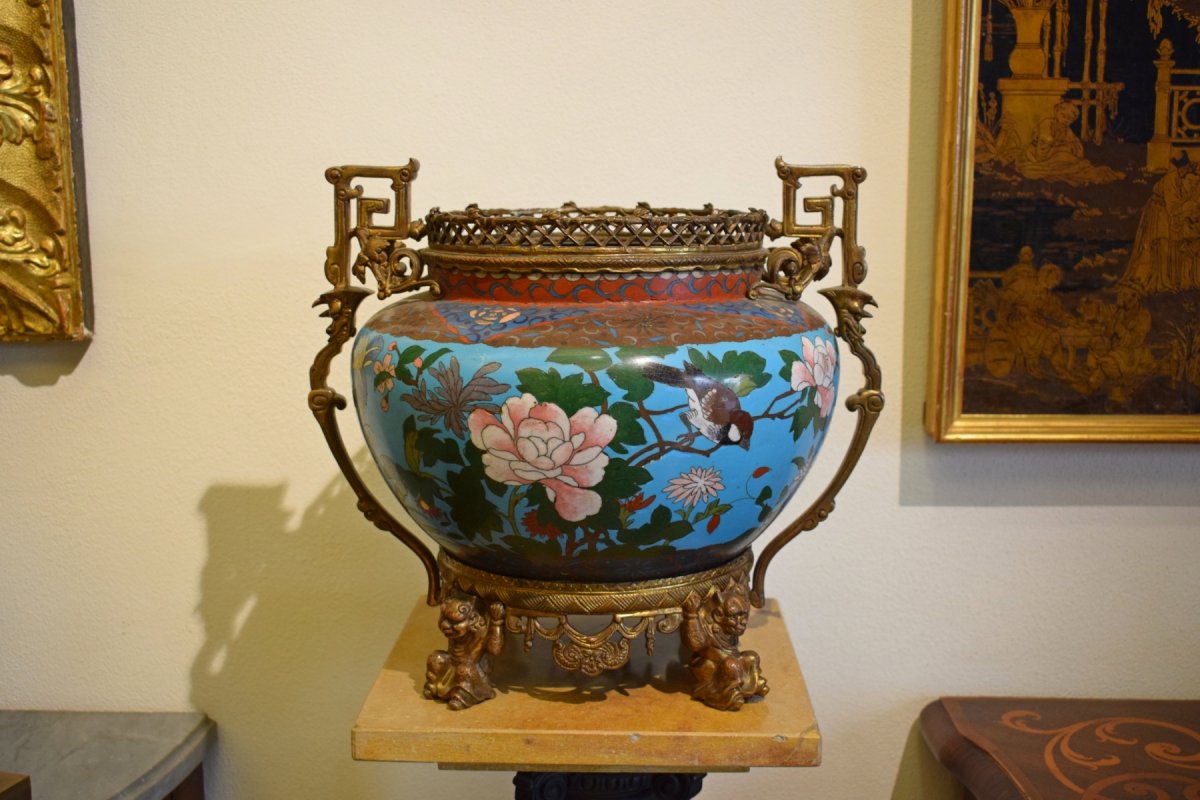
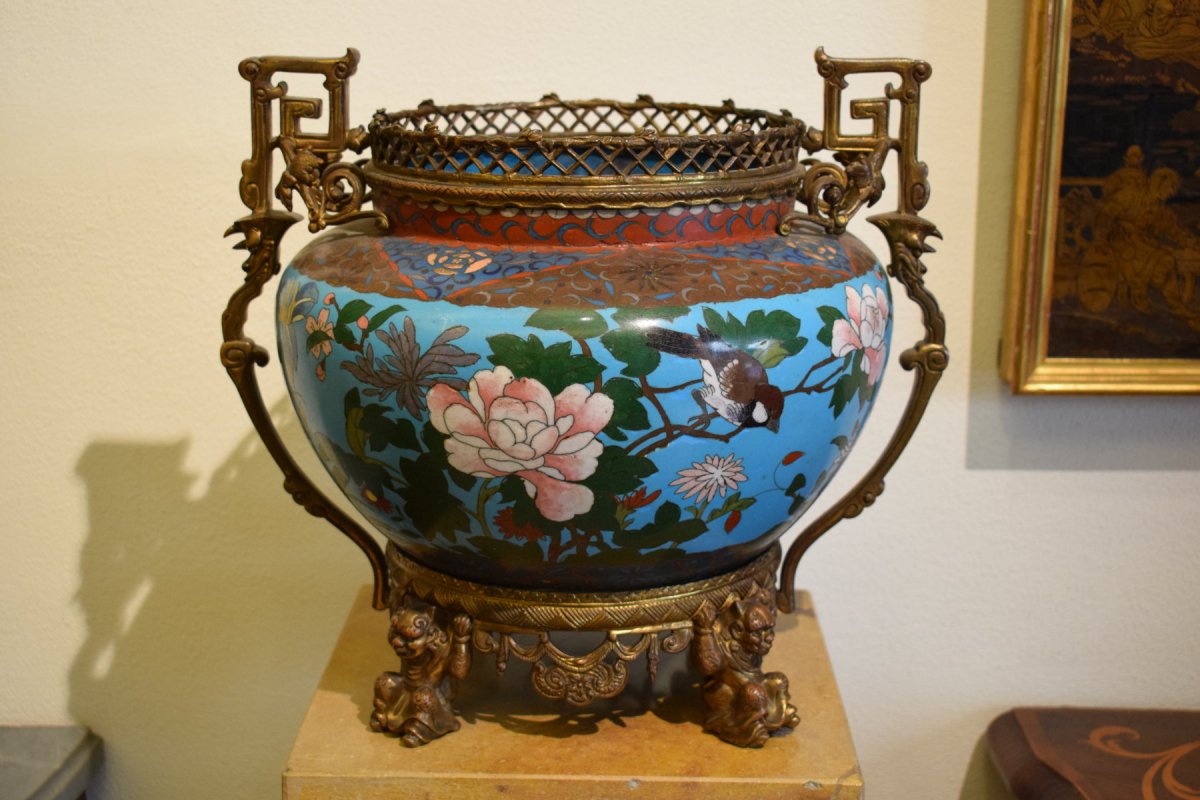
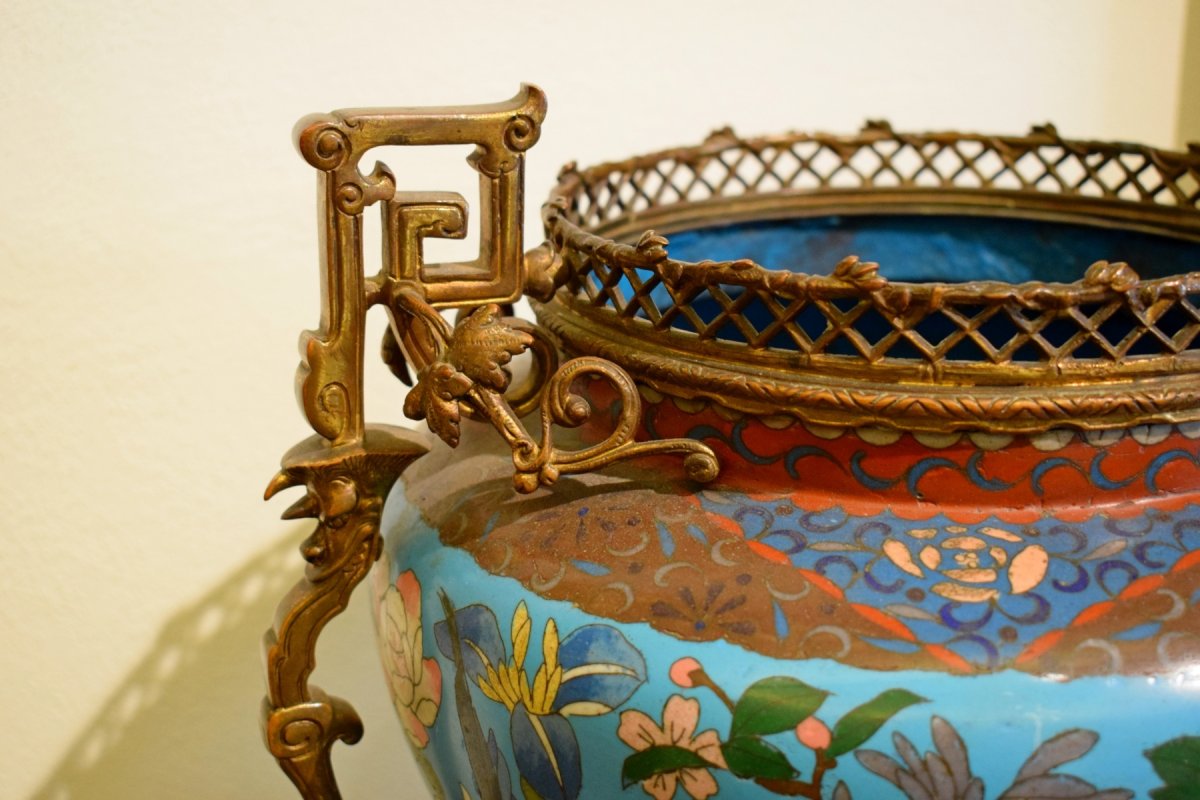
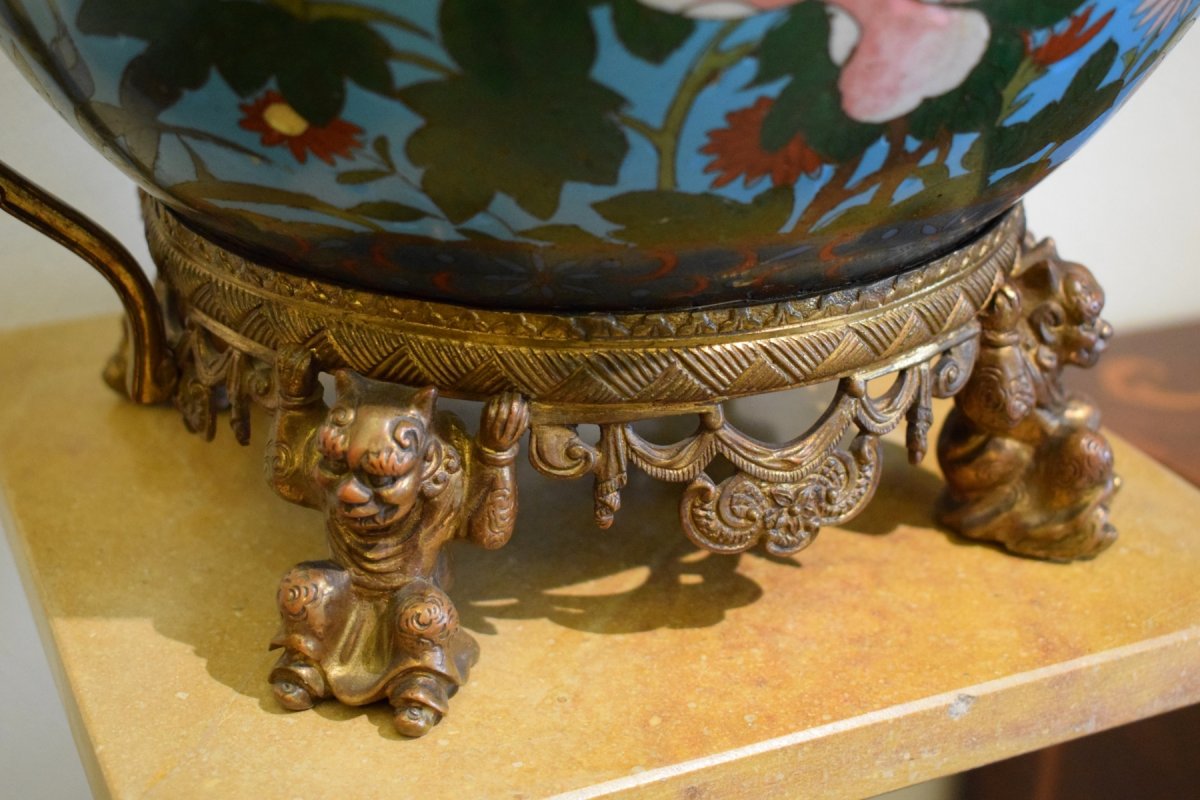
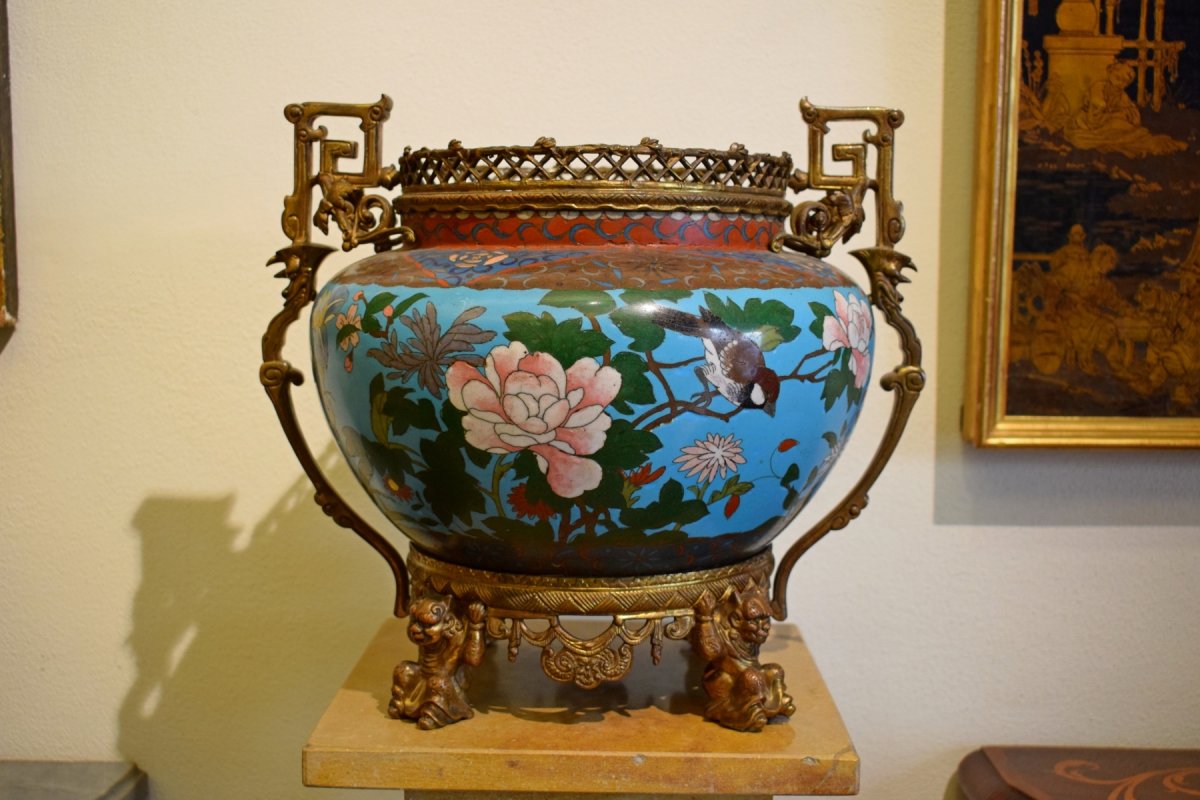
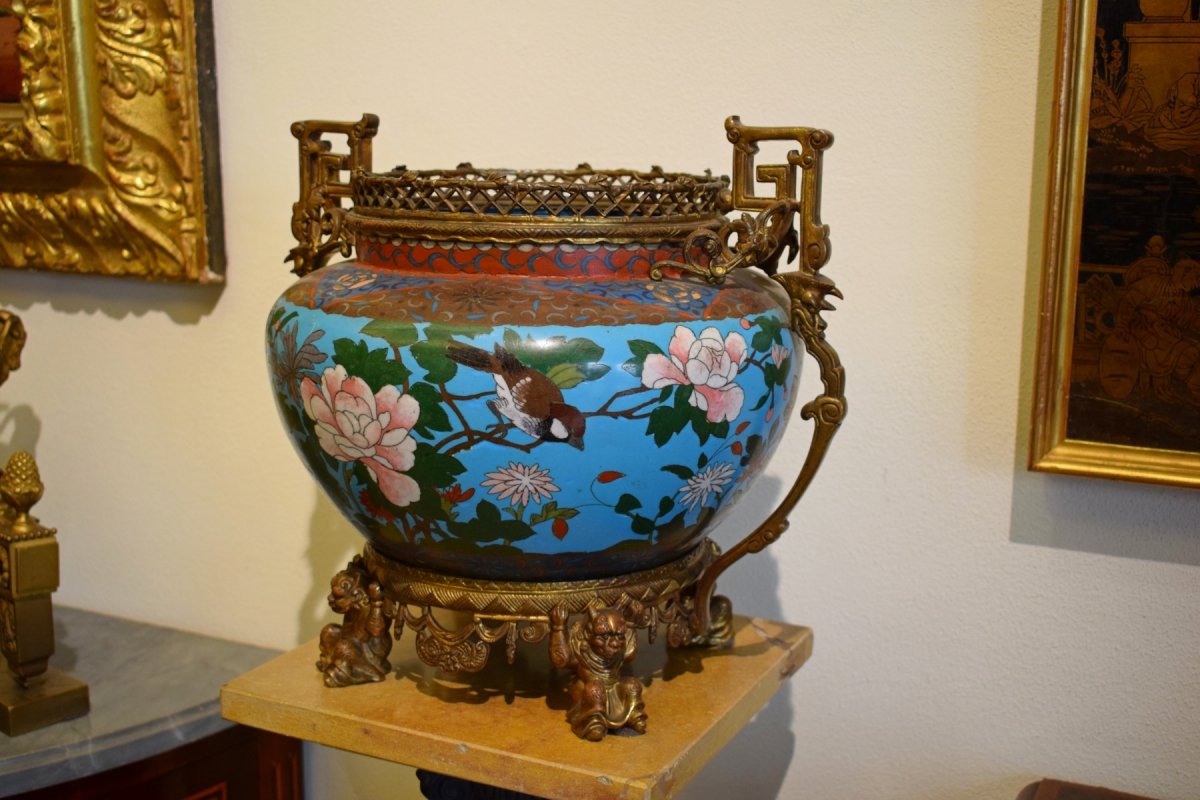















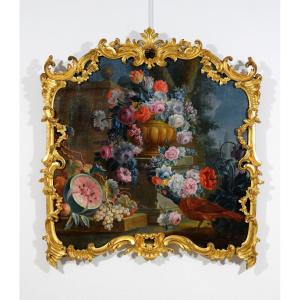




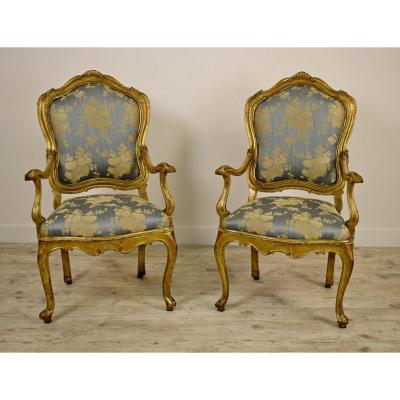









 Le Magazine de PROANTIC
Le Magazine de PROANTIC TRÉSORS Magazine
TRÉSORS Magazine Rivista Artiquariato
Rivista Artiquariato